
PREV ARTICLE
NEXT ARTICLE
FULL ISSUE
PREV FULL ISSUE
HERITAGE U.S. ERROR COIN OFFERINGSHere are some interesting U.S. error coins in an upcoming Heritage Auction sale, compiled from press releases. -Editor Fascinating Die Cap Error Stars in Simpson Collection
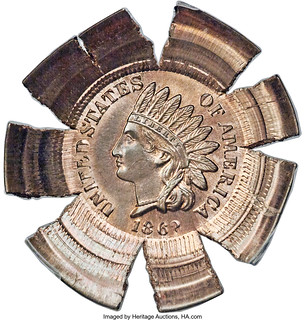
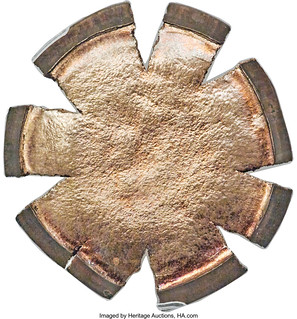
Most of the Bob Simpson Collection of US Coins is made up of the very best of American numismatics--the way coins look when things go right and a coin has been saved in amazing condition. However, one piece in the Simpson single-owner collection (Sale 1310) is special because of what went WRONG. https://coins.ha.com/itm/errors/1862-1c-indian-cent-obverse-die-cap-ms67-pcgs/p/1310-11338.s? A die cap is an error that can occur when a coin remains stuck on a day after it is struck instead of being released right away. While stuck to the die, this coin will create a fading impression on any other coin blanks (planchets) that continue to feed through below it. Over time, this coin will change shape and expand or flatten out if this process continues for long enough. It may also crack and fan out as seen in the example above. Sometimes, die caps can be extremely dramatic. One of the best-looking ones I can recall seeing is the Simpson piece, an 1862 Copper Nickel Indian Cent. Our catalogers agree, saying "This is one of the most stunning and spectacular errors that we have seen or handled, a remarkable illustration of what can go wrong during coining operations." This coin is amazing because of its huge starburst appearance (more the size of a half dollar than a penny!) as well as its fabulous condition--the coin is graded 67 out of 70 by PCGS despite its less-than-successful start at the US Mint. This coin would appeal to both error collectors and Indian Cent enthusiasts.
Wow - a remarkable error piece. -Editor
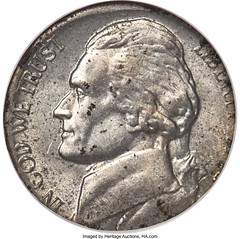
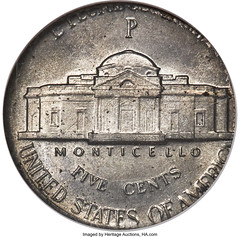
1943 was a strange year for the US Mint in several ways. First of all, Cents were struck in a silvery-colored Steel composition rather than the normal coppery-looking Bronze because of a shortage of industrial metals during World War II. Next, another change was made to the composition of Nickels because nickel was needed for the war effort as well. So-called "War Nickels" were created on 40% silver planchets to free up more nickel to be used for the Allied forces. Meanwhile, mintages of circulating coins were generally very high, with large numbers of small coins being produced in the 1940s overall. For example, nearly 1.1 billion Steel Cents were struck between the Philadelphia, Denver, and San Francisco Mints. With these changes happening all at once, some mistakes were bound to happen. The 1943 Bronze Cent is the most famous Mint mistake, resulting in very rare and expensive pennies that were accidentally struck on the wrong planchet. A less-famous but still fascinating and highly collectible error coin can be found in the September 2020 Signature Auction: A 1943 War Nickel that was accidentally struck on a Steel Cent planchet. Because the penny planchet was the wrong size and not as thick, the entire nickel design does not 100% fit. This Frankenstein of a coin went unnoticed at the time and likely slipped into a bin of coins at the US Mint, only to be found by a lucky collector and pulled out of change a short time later! It managed to survive in very nice condition, graded MS63 Full Steps by NGC today. This is a great piece for either the error coin collector or those who seek out World War II era coinage (a popular time period for collectors). Even though the date of the coin is not fully visible, our catalogers were able to place it as a 1943 due to the use of a Steel Cent planchet (only used in 1943) and the giant "P" mintmark (only used for the War Nickels of the 1942 to 1945 period). This is a great example of how a mix-up years ago is a prize for numismatists today! A 1970s Mistake Becomes a 2020 Prize
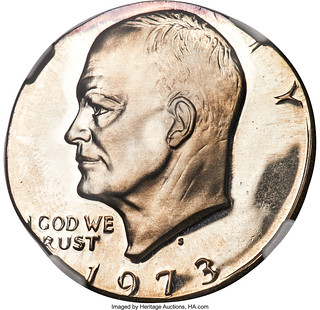
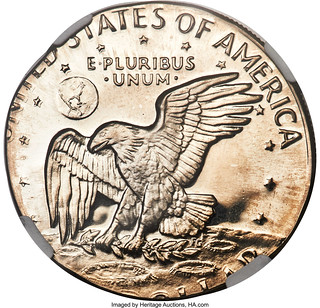
A major "oops" moment at the US Mint in the 1970s will result in a serious prize for collectors today. This 1973-S Proof Eisenhower Dollar, offered as part of Heritage's September US Coins Auction #1319, has a striking appearance that instantly tells you this that is a special piece and not like any other dollar coin of the period: https://coins.ha.com/itm/errors/coming-soon-/p/1319-89004.s?ic4=GalleryView-Thumbnail-071515 Proof coins are supposed to be struck to the highest standards of perfection when created by the US Mint. They are intended for Proof Sets, special collector's sets that never go into circulation. However, this proof coin really went astray when it was made and somehow escaped quality control to be available for error coin collectors today. First, this is supposed to be a dollar but was struck on a Half Dollar planchet (a much smaller coin blank meant for the Kennedy Half Dollars made that year). Next, the coin has an off-center appearance because the smaller planchet was not big enough to evenly accommodate the whole design. Dollar-sized error coins are popular because you can really see the mistakes and appreciate them. Also, error coins are generally more valuable when you can read the entire date, so this coin is made more desirable by being able to clearly see that it is a 1973-S Proof. We sold another 1973-S error recently that sold for around $19,000 ( https://coins.ha.com/itm/errors/1973-s-1-clad-eisenhower-dollar-double-struck-on-a-half-dollar-planchet-pr66-cameo-ngc/a/1318-3959.s), so this coin should draw lots of attention when it comes up for bid!

Wayne Homren, Editor The Numismatic Bibliomania Society is a non-profit organization promoting numismatic literature. See our web site at coinbooks.org. To submit items for publication in The E-Sylum, write to the Editor at this address: whomren@gmail.com To subscribe go to: https://my.binhost.com/lists/listinfo/esylum All Rights Reserved. NBS Home Page Contact the NBS webmaster 
|